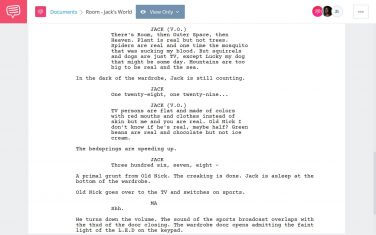

Naïf – a naïve or inexperienced narrator who views things from an innocent perspective.Clown – one who doesn’t take things seriously and thereby toys with the common narrative conventions.Madman – one who is dealing with trauma, mental illness, or emotional flaw that makes it difficult for them to interpret events accurately.Pícaro – one who exaggerates or misrepresents events for the purpose of bragging.In Pícaros, Madmen, Naīfs, and Clowns: The Unreliable First-person Narrator by William Riggan, the approach to unreliable narration is broken down into five types. Remember, the narrator controls the pacing, diction, who to root for, how the audience should feel about what happens, and the moral compass for the story as presented to the reader. But however you choose to go about it, keep in mind that this approach to viewpoint is very powerful since no one has more control over the plot-who, what, where, when, and why-than the narrator. they’re unreliable only about things related to themselves but honest otherwise) and that a story doesn’t need to tell the whole truth to still be true! Plus, when you use the unreliability technique-especially to its fullest extent-you can reveal that device to readers at various times: immediately ( The Perks of Being a Wallflower), gradually ( Gone Girl), or late enough to become a major plot twist ( The Murder of Roger Ackroyd). This means you can even develop characters that have layers of unreliability (e.g. With that in mind, we should note that the degree of unreliability runs on a scale from mild to heavy. In other words, your job as a writer is to decide how trustworthy or untrustworthy you plan to make that lead character. However, the truth is that all first-person narrators are unreliable because they are telling the story based on personal bias and because memory itself is a faulty illusion filtered through past experience and one’s level of vested interest in the story. the type most writers strive to incorporate-uses their personal perspective to tell readers all the information they need to know and does so as accurately as possible. So when I was given an opportunity to speak at the 2022 Craftfest held at ThrillerFest XVII, hosted by the International Thriller Writers in New York City, I decided to tackle the topic to discover: What are the benefits of using an unreliable narrator to tell a story? What is the purpose of unreliable narrators in fiction? And when it’s all said and done, how can writers reveal their unreliable narrator without angering the audience?īut first, what is an unreliable narrator?Īn unreliable narrator is someone whose storytelling lacks some level of veracity or credibility and this inaccuracy produces a void between the story’s reality and the narrator’s reality, which the reader must then bridge and eventually fill.

We love unreliable narrators like Tyler Durden from Chuck Palahniuk’s Fight Club or Amy Dunne from Gillian Flynn’s Gone Girl, but we rarely talk about how such narrators are written and what makes the characters so memorable.


 0 kommentar(er)
0 kommentar(er)
